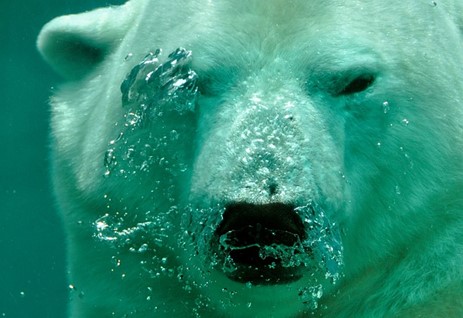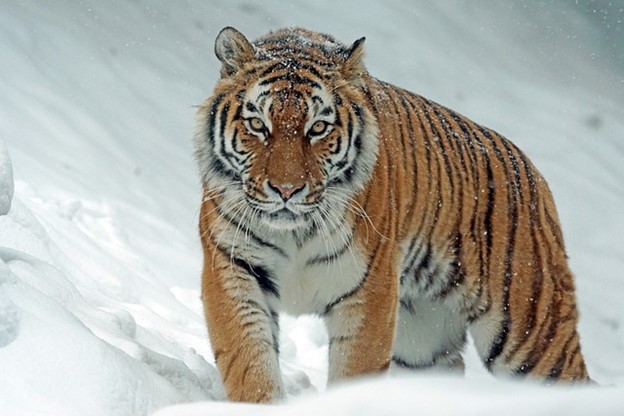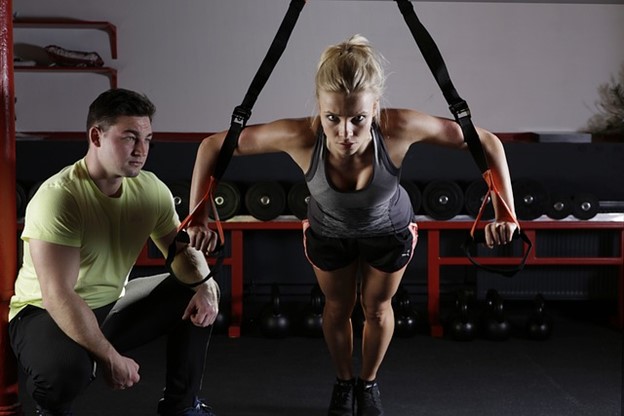
It’s New Year’s Day at 9am. The sky is overcast. The air is a crisp 42 degrees. We’re standing at the end of a dock on Lake Washington.
We strip down to our swimsuits and jump in.
Splash!
The water is bitingly cold, almost painful. We stay in as long as we can – which isn’t very long – and dry ourselves off on the dock. It takes a long time to warm up.
Why would we do such a thing?
Why do people do polar bear plunges?
One reason to do a polar bear plunge is symbolic. Kicking off the new year by choosing to do something uncomfortable sends a message to yourself that says, “I can choose to do uncomfortable things.”

It has a positive impact on your willpower identity, making you see yourself a little tougher, a little more badass. That, in turn, makes it easier to choose to do other hard things, such as:
- Working out
- Sobriety
- Saying no to dessert
- Embracing boredom rather than succumbing to digital addiction
- Overcoming procrastination
- Publishing your work and risking criticism
- Having difficult conversations
- Considering different perspectives on controversial topics
All of these important things have one thing in common: They make us uncomfortable.
So another reason to do a polar bear plunge is for discomfort training. Like fasting or a cold shower, it’s a way to practice being uncomfortable. It makes you tougher and therefore better able to handle whatever life throws at you.
Discomfort is the price of progress.
“If you are irritated by every rub, how will you be polished?” –Rumi1
You don’t grow while you’re safely inside your comfort zone. To become better, you have to experience the discomforts of being a beginner, struggling, making mistakes, and failing.
Challenges take you out of your comfort zone, but they’re also how you learn and grow and find out what you’re made of. You cannot get into flow by doing what’s easy, and there’s no hero’s journey without difficulty.2

For many important things in life, pain is the price of admission. From learning to ride a bike to climbing a mountain, from giving birth to growing old, pain is an essential part of the process of life.
If you’re not willing to accept some pain, you’ll stagnate.
Discomfort is natural.
In Michael Easter’s great book, The Comfort Crisis: Embrace Discomfort To Reclaim Your Wild, Happy, Healthy Self, he points out that “our ancestors’ lives were intimately intertwined with discomfort.”2
- We faced extreme heat, cold, sun, rain, and snow, without adequate shelter or modern clothing.
- We didn’t have couches and mattresses and pillows.
- We were hungry much of the time.
- We had to work hard just to survive.
- And we didn’t have digital devices to fill every potential moment of boredom with entertainment.2
“The modern comforts and conveniences that now most influence our daily experience—cars, computers, television, climate control, smartphones, ultraprocessed food, and more—have been used by our species for 100 years or less. That’s around 0.03 percent of the time we’ve walked the earth.”2
And because our species evolved in a world where discomfort was the norm, our bodies and brains are at their best when we experience some discomfort.
Discomfort is good for you.
“Most people today rarely step outside their comfort zones. We are living progressively sheltered, sterile, temperature-controlled, overfed, under challenged, safety-netted lives. …
But a radical new body of evidence shows that people are at their best—physically harder, mentally tougher, and spiritually sounder—after experiencing the same discomforts our early ancestors were exposed to every day. Scientists are finding that certain discomforts protect us from physical and psychological problems like obesity, heart disease, cancers, diabetes, depression, and anxiety, and even more fundamental issues like feeling a lack of meaning and purpose.” –Michael Easter2
Exercise is a great example. A tough workout is uncomfortable and might leave your muscles sore, but it provides an array of physical and mental benefits.

Regular exposure to extreme heat, such as through a sauna, is beneficial for cardiovascular health and can help prevent dementia3. Likewise, exposure to extreme cold, such as through cold showers, helps the body burn fat4 and can reduce chronic inflammation.5
The discomfort of hunger is also good for you. Eating too often inhibits our body’s ability to perform autophagy, which is your “body’s ‘taking out the trash’ process” – clearing out the metabolic byproducts of the day. As with your nightly glymphatic brain flush, this process cannot properly occur if you eat right before bedtime. Although hunger might initially decrease your mental and physical energy, your mind and body eventually become motivated by the feeling of hunger, more focused and more energized, like a hungry tiger out on the hunt.2

In the modern world, we constantly have access to digital media that we can use to alleviate the discomfort of boredom. But, as a result, we’re losing the surprising benefits of boredom: memory consolidation, creative insight, and recovery from stress. Sitting in silence for just two minutes lowers your blood pressure.2 Boredom might be uncomfortable, but it’s essential to our mental and physical well-being.
Discomfort is my New Year’s theme.
Some people choose a theme for the new year, rather than a New Year’s Resolution. Themes like mindfulness, gratitude, vegetables, exercise, or reading. Not a specific behavior or habit to target, but a general direction to take.
This year, I’ve chosen discomfort as my theme. While it might seem odd that I’ve chosen something negative to focus on, I don’t think discomfort is actually negative. I think it’s neutral. It’s just nerve signals firing, after all. In fact, because struggle makes you stronger, discomfort can be seen as good.

The trouble comes when we interpret discomfort as negative – as something bad, something to be avoided. Then we don’t do the work we need to do. Then we don’t grow and change in order to become better. And, when discomfort inevitably arrives, we get upset. We distract ourselves with digital media, and we numb ourselves with drugs to make the discomfort go away.
How do I embrace the theme of discomfort?
When my alarm goes off, and it’s cold in the room, I want to stay in my cozy bed. Getting up would be uncomfortable. Discomfort, I think, reminding myself that I’m committed to leaning into discomfort whenever I have the chance. And I get up.
Just saying the word to myself has become a reminder that discomfort is not something to be avoided; it’s an opportunity to become better:
- Pushing myself to keep going during my morning workout.
- Stepping into the shower, blasting myself with cold water, and resisting the urge to turn it to hot right away. Discomfort.
- Getting up the nerve to speak my mind, even though it would be easier to avoid confrontation. Discomfort.
- Sitting in boredom rather than pulling out my phone to check email.
Discomfort is inevitable.
Try as we might to avoid discomfort, it always finds us. Usually, all we’re able to do is swap one type of discomfort for another.
- We avoid changing our habits because forcing ourselves into a new routine is uncomfortable. But staying the way we are is also uncomfortable, just in a different way. It doesn’t feel good to know we’re not living up to our potential.
- We avoid asking for help because admitting we need help is uncomfortable. But then we wind up feeling stuck, lost, alone, and hopeless.
- We avoid doing uncomfortable tasks, but procrastination comes with its own kind of pain.
As Phil Stutz likes to say, we’re never exonerated from pain, uncertainty, and hard work.6 Discomfort will always be there, in one form or another.
And since discomfort is inevitable, we might as well choose the versions of discomfort that lead to becoming better.
1 Helminski, Camille Adams. Rumi: Daylight A Daybook of Spiritual Guidance. Shambhala, 1999.
2 Easter, Michael. The Comfort Crisis: Embrace Discomfort To Reclaim Your Wild, Happy, Healthy Self. Rodale Books, 2021.
3 Heinonen, Ilkka and Jari A. Laukkanen. “Effects of heat and cold on health, with special reference to Finnish sauna bathing.” American Journal of Physiology. May 1, 2018.
4 Ivanova YM, Blondin DP. “Examining the benefits of cold exposure as a therapeutic strategy for obesity and type 2 diabetes.” Journal of Applied Physiology. May 1, 2021.
